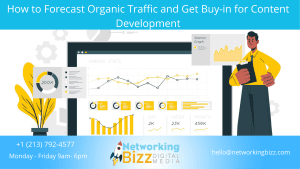Pinterest marketing is a growing sector as B2C brands are planning to spend more on the platform in 2020. Pinterest has more than 291 million monthly active users and though people often refer to as a social media platform, that name does not do it justice anymore. It’s now more of a platform where people go to find answers or solutions to problems in visual form. Whether you sell physical products or offer a service, Pinterest is the perfect platform to market your brand. The best part is that you don’t need to create separate content for Pinterest. All you need to create is a catchy Pin for your site’s pre-existing content and share it on the platform.
If you’re not currently marketing your business on Pinterest, you’re missing out on a huge audience that’s within your reach. In this article, I’m going to explain how Pinterest works and share some of the best tactics we’ll use to market ourselves on the platform going into 2020.
Understanding the Pinterest Algorithm
Pinterest is a search engine. It’s really as simple as that. This means there is an algorithm determining where Pins rank. While we don’t know as much about Pinterest SEO as we do for Google, we do know that a lot of all the core ranking factors are the same. With this in mind, the best way to market and grow your brand on Pinterest is to find a balance between utilizing strong SEO signals and creating useful, emotional, or thought-provoking content that satisfies searcher intent.
The best part is that it’s not that hard, as I’m going to show you. So, if you’re looking to dominate Pinterest in 2020, here are some of my best Pinterest marketing tactics for growth.
What are Pinterest Marketing Tactics for 2020?
First of all, change over to a Pinterest Business Account. When you first sign up for a Pinterest account, you set up a personal account. If you use Pinterest for your business, you need to change over to a business account.
A business account gives you access to all the analytics tools, gives you more control over branding and content attribution, allows you to promote Pins, and more. It’s free to do and doesn’t have any downsides, so this should be one of the first things you do.
1. Always Think About Keywords
 As I already mentioned, Pinterest is a search engine. A lot of users type in keywords to pull the content they’re looking for. Pinterest also puts relevant content in front of people, as well as suggesting other phrases that a user might have interest in.
As I already mentioned, Pinterest is a search engine. A lot of users type in keywords to pull the content they’re looking for. Pinterest also puts relevant content in front of people, as well as suggesting other phrases that a user might have interest in.
The results are only going to be as good as the keywords used to title and describe the Pins. So, it’s our job to be as relevant and niched-down as possible when titling and writing descriptions for Pins.
You will probably use similar keywords to the title of the post you share, but it doesn’t hurt to hop over to Pinterest first and perform a search yourself. See if any other keywords pop up that are relevant. You can add these to your description.
2. Spend Some Time Replying To/Posting Comments
 Another tactic that many marketers ignore is engaging with comments on Pins. Pin activity is a factor in determining where a Pin gets ranked, and comments are one of the strongest signals that people are engaging with a Pin.
Another tactic that many marketers ignore is engaging with comments on Pins. Pin activity is a factor in determining where a Pin gets ranked, and comments are one of the strongest signals that people are engaging with a Pin.
There’s a human element to this, too. People leaving comments want brands to hear them and often want a response. Spending some time engaging with your community will increase your followers, brand loyalty, and other metrics that contribute to growing your brand on Pinterest.
3. Claim Your Website and Other Social Profiles
 Pinterest recommends claiming your website. Doing so enables you to get access to your website analytics so you can take a detailed look at which Pins are working, the demographics of the users consuming your content, and many more helpful statistics.
Pinterest recommends claiming your website. Doing so enables you to get access to your website analytics so you can take a detailed look at which Pins are working, the demographics of the users consuming your content, and many more helpful statistics.
You can also claim your Instagram, YouTube, and Etsy accounts if you have these. This way, when someone shares your content, you get proper attribution and you can measure the engagement across these platforms as well.
4. Optimize Your Boards with Keyword-Rich Descriptions
This is one of the things I most commonly see Pinterest users not doing correctly. Using keywords for your board titles and descriptions is almost as important as it is for your Pins.
Boards are searchable, although people aren’t searching for boards very often. More importantly than that, Pinterest’s algorithm looks at the keywords used on boards to help determine the content that’s on the boards and rank it.
It only takes a few minutes to add a description to a board. Just think about how you’d describe the content within the board to someone, and make sure your keywords are in there.
5. Create Multiple Pins for the Same Article
Most people make a header image for a post and just pin that. That’s all well and good, but if you miss the mark on the keywords or your Pin gets buried, you’re missing out on valuable traffic.
I always recommend creating more than one Pin per article. Creating extra Pins doesn’t take the same time as creating the first. You just need to change the background picture or change the text a little.
By creating more than one Pin, you can test different keywords and descriptions and use different hashtags to reach a much wider audience.
6. Keep an eye on performance
If you’re running Pinterest ads, you’re likely also running ads on Facebook, Google as well as a number of other channels. It can be overwhelming to stay onto of all your marketing data and have a clear understanding of which channels and ads are working and which are not.
7. Automate your content
You can schedule Pins for months in advance, so you no longer need to manually pin your content daily.
8. Keep Fresh Content Flowing Through Your Boards
 Fresh Pins and consistency are half the game when it comes to mastering Pinterest. They want you to upload more content and will reward you for doing so.
Fresh Pins and consistency are half the game when it comes to mastering Pinterest. They want you to upload more content and will reward you for doing so.
If you don’t have a lot of content of your own yet, it’s better to share other people’s content than nothing at all. The more you build out your boards with relevant content, the stronger the keyword signals and relevancy those Pins will have in the search results.
9. Invest in High-Quality Images
 It’s no secret that Pinterest is a visual platform. You can think about Pinterest as being very similar to a Google image search, with the added benefit of being able to add text to your images to increase the click-through rate.
It’s no secret that Pinterest is a visual platform. You can think about Pinterest as being very similar to a Google image search, with the added benefit of being able to add text to your images to increase the click-through rate.
Therefore, it’s a no brainer that the quality of your images affects your click-through rate. Beyond that, you’re representing your brand when posting content on Pinterest. You should always put out the most professional-looking and polished Pins you can.
In Summary
Pinterest must be a part of any online marketing strategy. It’s just that important. It’s an easy way to connect and engage with your audience, promote your products and services, and grow your online presence.
By utilizing the tactics I covered in this post, you can promote any type of business and tap into the huge audience of content-hungry Pinterest users that are looking for what you offer.

